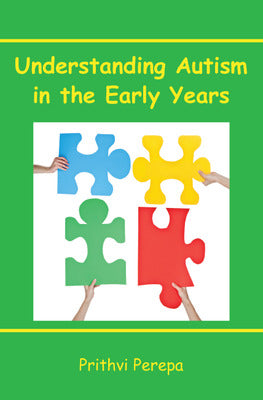Understanding Autism in Early Years
- Unit price
- / per
-
Author:PEREPA Prithvi
-
ISBN:9780335246649
-
Publication Date:May 2013
-
Edition:1
-
Pages:134
-
Binding:Paperback
-
Publisher:Open University Press
-
Country of Publication:United Kingdom


A Back Order button means that we don’t have the book in stock at our store. It may already be on order – or we can order it for you from a publisher or distributor at no additional cost.
As we source items from around the globe, a back-order can take anywhere from 5 days to several weeks to arrive, depending on the title.
To check how long this might take, you’re welcome to contact us and we can provide an ETA or any other information you need. We recommend checking the timeframe before committing to an online order.
Understanding Autism in Early Years
- Unit price
- / per
-
Author:PEREPA Prithvi
-
ISBN:9780335246649
-
Publication Date:May 2013
-
Edition:1
-
Pages:134
-
Binding:Paperback
-
Publisher:Open University Press
-
Country of Publication:United Kingdom
Description
Adding product to your cart
You may also like
A Back Order button means that we don’t have the book in stock at our store. It may already be on order – or we can order it for you from a publisher or distributor at no additional cost.
As we source items from around the globe, a back-order can take anywhere from 5 days to several weeks to arrive, depending on the title.
To check how long this might take, you’re welcome to contact us and we can provide an ETA or any other information you need. We recommend checking the timeframe before committing to an online order.
You may also like
You may also like
-
According to the National Autistic Society’s estimation, one in a hundred children in the UK is on the autistic spectrum; and while there continues to be an increase in the identification of the condition, there remains a significant number of children who have not received a formal diagnosis. This book will aim to support practitioners in early years settings who encounter both these categories of children and will provide practical suggestions based on theoretical underpinning. The book opens with an introduction to autism spectrum, explaining the main features of the condition and a discussion of the diversity of the spectrum, including how autism affects every child differently. It then provides in-depth information on some of the characteristics which can lead to a child being diagnosed as having an autism spectrum disorder, as well as information on available screening tools. The book provides a focus on the three areas of difficulties that children with autism have - social interaction, social communication and imagination and play - and the role that the early years practitioners can have , including how they can best work with parents.
-
-
Author: PEREPA PrithviISBN: 9780335246649Publication Date: May 2013Edition: 1Pages: 134Binding: PaperbackPublisher: Open University PressCountry of Publication: United Kingdom
According to the National Autistic Society’s estimation, one in a hundred children in the UK is on the autistic spectrum; and while there continues to be an increase in the identification of the condition, there remains a significant number of children who have not received a formal diagnosis. This book will aim to support practitioners in early years settings who encounter both these categories of children and will provide practical suggestions based on theoretical underpinning. The book opens with an introduction to autism spectrum, explaining the main features of the condition and a discussion of the diversity of the spectrum, including how autism affects every child differently. It then provides in-depth information on some of the characteristics which can lead to a child being diagnosed as having an autism spectrum disorder, as well as information on available screening tools. The book provides a focus on the three areas of difficulties that children with autism have - social interaction, social communication and imagination and play - and the role that the early years practitioners can have , including how they can best work with parents.-
Author: PEREPA PrithviISBN: 9780335246649Publication Date: May 2013Edition: 1Pages: 134Binding: PaperbackPublisher: Open University PressCountry of Publication: United Kingdom
-



